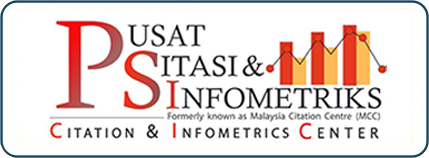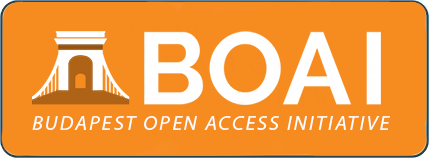Signifying the Crucial Role of Performance Measurement in Istibdal Waqf Projects in Malaysia
DOI:
https://doi.org/10.33102/jmifr.530Keywords:
Waqf, Istibdal waqf, Performance measurement, Waqf institution, MalaysiaAbstract
Istibdal waqf is one of the methods conducted to optimise waqf property to become more productive. In Malaysia, scholars have agreed that istibdal can be applied to all categories of waqf property. It is also used to solve the problems related to waqf land, which includes urban development, roads, land acquisition, and unproductive waqf land. Istibdal waqf can also be implemented if a waqif has expressed the intention to implement istibdal if the waqf properties can no longer benefit the beneficiaries. Therefore, this study aims to explain the indicators proposed for measuring the performance of the istibdal waqf project in waqf institutions in Malaysia. This study used qualitative research based on the library method. Facts and arguments are drawn from library materials such as high-impact journals and articles, newspapers, and conference papers. The result of the study discovered some indicators for the performance measurement in istibdal waqf. The indicators are divided into four categories: input, output, outcome, and network. To maximise the potential of waqf in a country, the performance measurement of waqf institutions must be measured to ensure that the waqf projects can benefit the community.
Downloads
References
Abd Jalil, M. I., Hamzah, A. A., William, J. J., Shaikh, I. M., & Ahsan, M. H. (2023). Exploring motivational factors for Muslims’ cash waqf participation. The Journal of Muamalat and Islamic Finance Research, 20(2), 1–18. https://doi.org/10.33102/jmifr.506
Abdul Kader, S.A. (2018). Pelaksanaan Istibdal Dalam Kes Pengambilan Tanah Wakaf [Master’s thesis, Universiti Teknologi Malaysia]. Universiti Teknologi Malaysia Institutional Repository.
Abdul Razak, N. A. (2022). The Challenges of al-Tawriq Istibdaliah Application: A Study Among Waqf Managers. [Master’s thesis, Universiti Sains Islam Malaysia]. USIM Institutional Repository.
Abdullah, B., & Bahari, Z. (2019). Mauquf Alayh di Malaysia: Isu dan Cabaran. Journal of Islamic, Social, Economics and Development (JISED), 4(26), 57–65. https://jised.com/PDF/JISED-2019-26-12-06.pdf
Ali, N. M., Shahnaz, N., Mahdzan, A., Ahmad, R. & Ahmad, A. R. (2019). Perceived factors of successful social enterprises: The case of the state islamic religious councils and waqf land development in Malaysia. International Journal of Entrepreneurship and Management Practices, 2(6), 66–75. https://doi.org/10.35631/IJEMP.26006
Al-Zuhaili, W. (1998). Al-Wiṣāyā wa al-Waqf fī al-Fiqh al-Islāmī. Dār al-Fikr.
Anuar, N. A., Mokhtar, N. N., Sulaiman, M. A., Alias, M. N., & Zainol, N. N. (2022a). Development of Waqf Land in Malaysia: A Current Review in State of Pulau Pinang. Journal of Islamic, Social, Economics and Development (JISED), 7(46), 285–292. https://jised.com/PDF/JISED-2022-46-07-30.pdf
Anuar, N. A., Sulaiman, M. A., Mokhtar, N. N. A., Zainol, N. N., Isa, M., & Wan Zahari, W. Y. (2022b). Evaluating the Performance of Waqf Land Development: A Case Study of Waqf Seetee Aisah, Pulau Pinang. ESTEEM Journal of Social Sciences and Humanities, 6(1), 109–121. https://ejssh.uitm.edu.my/images/Vol6Apr22/ISL16697_EJSSHVOL6_1_APR2022.pdf
Arshad, R. & Mohd Zain, N. (2017). Performance measurement and accountability of waqf institutions in Malaysia. SHS Web of Conferences 36, 1–15. https://doi.org/10.1051/shsconf/20173600005
Arshad, R., Mohd Zain, N.H., Tajul Urus, S., & Chakir, A. (2018). Modelling maqasid waqf performance measures in waqf institutions. Global Journal Al-Thaqafah, 8, 157–169. https://doi.org/10.7187/GJATSI2018-11
Asni, F., Mahamud, M.A. and Sulong, J. (2020). Socio-economics and management of Muslim cemetery waqf using istibdal and GIS method in Penang state. Journal of Islamic Accounting and Business Research, 11(7), 1343–1362. https://doi.org/10.1108/JIABR-01-2019-0026
Asni, F., Mohammed Noor, A. and Hasbulah, M.H. (2024). Management of cash waqf fund generation through the implementation of istibdal in Kedah. Qualitative Research in Financial Markets, 16(1), 60–86. https://doi.org/10.1108/QRFM-03-2022-0048
Azmi, A.S., Hanif, N.R., & Mahamood, S.M. (2017). Revitalising The Development of Waqf Properties: A Way Forward. International Journal of Real Estate Studies, 11(3), 1–11. https://builtsurvey.utm.my/intrest/wp-content/uploads/sites/243/2017/07/01-Revitalising-the-Development-of-Waqf-Properties-A-way-forward.pdf
Bahari, Z., & Aziz, A. H. A. (2019). The Understanding and Awareness of Waqf Istibdal Application in Peninsular Malaysia. In N. S. Mat Akhir, J. Sulong, M. A. Wan Harun, S. Muhammad, A. L. Wei Lin, N. F. Low Abdullah, & M. Pourya Asl (Eds.), Role(s) and Relevance of Humanities for Sustainable Development (pp. 269–278). European Proceedings of Social and Behavioural Sciences. https://doi.org/10.15405/epsbs.2019.09.29
Bello, H., Ayob, M. F., & Ahmad Sarkawi, A. (2020). Assessment of waqf models for provision of affordable housing in Malaysia: A case study of Majlis Agama Islam Wilayah (MAIWP). Journal of Architcture, Planning & Construction Management, 10(1), 55–67. https://journals.iium.edu.my/kaed/index.php/japcm/article/view/389/286
Bernama. (2023, September 11). Inti pati ucapan PM Anwar semasa pembentangan Kajian Separuh Penggal RMK12. Astro Awani. https://www.astroawani.com/berita-malaysia/inti-pati-ucapan-pm-anwar-semasa-pembentangan-kajian-separuh-penggal-rmk12-436820
Ebrahim, A., & Rangan, V. K. (2014). What Impact? A Framework for Measuring the Scale and Scope of Social Performance. California Management Review, 56(3), 118–141. https://doi.org/10.1525/cmr.2014.56.3.118
Economic Planning Unit. (2021). Twelfth Malaysia Plan 2021-2025 A Prosperous, Inclusive, Sustainable Malaysia. Economic Planning Unit Prime Minister’s Department. https://pulse.icdm.com.my/wp-content/uploads/2021/09/Twelfth-Plan-Document_compressed-1.pdf
Faturohman, T., Farras, M., Rasyid, A., Rahadi, R. A., Darmansyah, A., & Afgani, K. F. (2021). The potential role of islamic social finance in the time of COVID-19 pandemic. Review of Integrative Business and Economics Research, 10(1), 95–105. http://buscompress.com/uploads/3/4/9/8/34980536/riber_10-s1_10_u20-063_95-105.pdf
Hasan, H., & Ahmad, I. H. (2019). Malaysian Corporate Waqf Benchmarking and Performance Evaluation [Conference paper]. Islamic Philanthropy Conference (WUIPCON 2014). https://www.researchgate.net/publication/336823521_MALAYSIAN_CORPORATE_WAQF_BENCHMARKING_AND_PERFORMANCE_EVALUATION
Hasbullah, M., Yusoff, S. H., & Zakaria, M. Z. (2019). Istibdal Harta Wakaf: Kajian Ringkas Terhadap Peranan dalam Mengembangkan Produk Wakaf. Journal of Fatwa Management and Research, 16(2), 160–171. https://doi.org/10.33102/jfatwa.vol16no2.13
Hashim, H., & Ab. Rahman, A. (2012). Pengurusan Pembangunan Harta Wakaf: Pengalaman Majlis Agama Islam Negeri Pulau Pinang (MAINPP) Terhadap Wakaf Seetee. International Journal of Management Studies (IJMS), 19(2), 103–123. http://dx.doi.org/10.32890/ijms.19.2.2012.10374
Helmig, B., Ingerfurth, S. & Pinz, A. (2013). Success and failure of non-profit organisations: theoretical foundations, empirical evidence, and future research. International Journal of Voluntary and Non-profit Organizations, 25, 1509–1538. https://doi.org/10.1007/s11266-013-9402-5
Hisham, S., Jasiran, H., & Jusoff, K. (2013). Substitution of Waqf Properties (Istibdal) in Malaysia: Statutory Provisions and Implementations. Middle-East Journal of Scientific Research 13 (Research in Contemporary Islamic Finance and Wealth Management), 23–27. https://www.idosi.org/mejsr/mejsr13(cifwm)13/5.pdf
Ibrahim, A., & Ibrahim, ‘A. (2018). Pelaksanaan istibdal dan pembangunan tanah wakaf di Perak. Asian People Journal (APJ), 1(2), 287–297. https://journal.unisza.edu.my/apj/index.php/apj/article/view/77
Jasni, S. (2013). Permissibility of Istibdal in Islamic Law and the Practice in Malaysia. Journal of US-China Public Administration, 10(7), 680–689. https://www.academia.edu/31461790/Permissibility_of_Istibdal_in_Islamic_Law_and_the_Practice_in_Malaysia
Johari, F., Wan Ismail, W. A. F., Mas’ad, M. A., Misbah, H., Baharuddin, A. S., & Abdul Razak, N. A. (2019). Penerokaan konsep al-tawriq dalam pencairan aset wakaf. Journal of Fatwa Management and Research, 13(1), 198–214. https://doi.org/10.33102/jfatwa.vol13no1.179
Kamarubahrin, A. . F., Ahmed Ayedh, A. M., & Khairi, K. F. (2019). Accountability practices of waqf institution in selected states in Malaysia: A critical analysis. International Journal of Economics, Management and Accounting, 27(2), 331–352. https://journals.iium.edu.my/enmjournal/index.php/enmj/article/view/664
Kamaruddin, M. I. H., & Hanefah, M. M. (2021). An empirical investigation on waqf governance practices in waqf institutions in Malaysia. Journal of Financial Reporting and Accounting, 19(3), 455–473. https://doi.org/10.1108/JFRA-03-2020-0055
Laallam, A., Kassim, S., Engku Ali, E.R.A., & Saiti, B. (2020). Intellectual capital in non-profit organisations: lessons learnt for waqf institutions. ISRA International Journal of Islamic Finance, 12(1), 27–48. https://doi.org/10.1108/IJIF-10-2018-0111
Lee, C., & Nowell, B. (2014). A framework for assessing the performance of non-profit organizations. American Journal of Evaluation, 36(3), 299–319. https://doi.org/10.1177/1098214014545828
Mat Rani, M. A. (2015). Mekanisme Istibdal dalam Pembangunan Tanah Wakaf di Terengganu. Journal of Contemporary Islamic Studies, 1(8), 115–133. https://ir.uitm.edu.my/id/eprint/13768
Mohamad, M.R. (2020). Kajian Pelaksanaan Istibdāl bagi Tanah-Tanah Wakaf di Malaysia: A Study on the Implementation of Istibdāl for Waqf Land in Malaysia. ‘Abqari Journal, 23(1), 60–69. https://doi.org/10.33102/abqari.vol22no2.275
Mohamad, M.R. (2020). Kajian Terhadap Hubungan Istibdāl Bagi Tanah Wakaf Di Bawah Akta Pengambilan Balik Tanah 1965 (Akta 486). International Academic Research Journal of Social Science, 6(1), 41–47. http://www.iarjournal.com/wp-content/uploads/IARJ_SS_2020_6_1_41-47.pdf
Mohamad, M.R., Zurita, M.Y. & Nordin, N. (2021). Pelaksanaan Istibdāl Bagi Tanah-Tanah Wakaf Di Malaysia: Kajian Perbandingan Antara Hukum Syarak Dengan Perundangan Sivil. UUM Journal of Legal Studies, 12(2), 307–331. https://e-journal.uum.edu.my/index.php/uumjls/article/view/15603
Mohamad, N. A., Kader, S. Z. S. A., & Ali, Z. (2012, November 15). Waqf lands and challenges from the legal perspectives in Malaysia [Unpublished proceeding paper]. IIUM-Toyo University Joint Symposium Sustainable Build Environment: Lessons Learned from Malaysia and Japan, Toyo University, Tokyo Japan. http://irep.iium.edu.my/28025/
Mohamad, N. I. (2023, April 14). RM200 juta untuk perumahan atas tanah wakaf. Berita Harian. https://www.bharian.com.my/berita/nasional/2023/04/1090002/rm200-juta-untuk-perumahan-atas-tanah-wakaf
Mohammad, M. T. S. H. (2009). Alternative development financing instruments for waqf properties. Malaysian Journal of Real Estate, 4(2), 45–59. https://www.researchgate.net/publication/344320774
Mohammed Noor, A. & Awang, M. R. (2013). Pelaksanaan Istibdal Wakaf di Negeri Kedah Darul Aman. Islamiyyat, 35(1), 49–56. https://core.ac.uk/download/pdf/19508554.pdf
Mohammed Noor, A., & Ismail, C. Z. (2016). Impak pembangunan tanah wakaf menerusi kaedah istibdal terhadap penjanaan hasil wakaf di negeri Kelantan. Prosiding Muktamar Waqf Iqlimi III 2016 (IQLIMI2016). Pusat Pembangunan Pembiayaan Wakaf (PPPW), Universiti Sains Islam Malaysia.
Mohammed Noor, A., Asni, F., Mat Rani, M. A., & Ramle, M. R. (2023). Analysis of issues and solutions on the implementation of istibdal waqf property in states of Peninsular Malaysia. Qualitative Research in Financial Markets, 15(3), 423–444. https://doi.org/10.1108/QRFM-04-2021-0071
Mohammed Noor, A., Ismail, C. Z., & Abu Bakar, M. (2021). Analysis of cash fund generation through istibdal method on waqf land: A case study in the state of Johor. Phsychology and Education Journal, 58(2), 6090–6097. http://psychologyandeducation.net/pae/index.php/pae/article/view/3086
Mohd Thas Thaker, M. A. B., & Allah Pitchay, A. (2018). Developing waqf land through crowdfunding-waqf model (CWM): the case of Malaysia. Journal of Islamic Accounting and Business Research, 9(3), 448–456. https://doi.org/10.1108/JIABR-05-2016-0062
Nazjmi, W. A. N., Fisol, M., Bakar, M. A. B. U., & Ahmad, A. (2021). Waqf property management through the maqasid Al-Shariah approach. Journal of Contemporary Issues in Business and Government, 27(3), 28–31. https://www.researchgate.net/publication/354749011_Waqf_Property_Management_Through_the_Maqasid_Al-Shariah_Approach
Sabri, H., & Mahamood, S. M. (2019). The Factors Influences Toward Istibdal Implimentation For Waqf Development: The Way Forward. Al-Qanatir: International Journal of Islamic Studies, 16(2), 28–36. https://www.al-qanatir.com/aq/article/view/245
Syubair, M. U. T., & Yasho, H. (2009). Istibdāl al-Waqf fī al-Fiqh al-Islāmī wa al-Qawānīn al-Mu'aṣirāh. Journal of College of Shariah & Islamic Studies, 27(1). http://hdl.handle.net/10576/4043
Uyar, A. (2010). Development of non-financial measures as contemporary performance measurement tools [Paper presentation]. 6th MÖDAV International Accounting Conference, Istanbul, Turkey.
Zainuddin, A. F. (2020). Konsep Istibdal yang Digunakan oleh Majlis Agama Islam Negeri dan Kajian Terhadap Pencerobohan Tanah Wakaf di Negeri Johor.
Downloads
Published
How to Cite
Issue
Section
License
Copyright (c) 2024 Nor Amni Bazilah Mohd Zain, Fuadah Johari

This work is licensed under a Creative Commons Attribution 4.0 International License.















